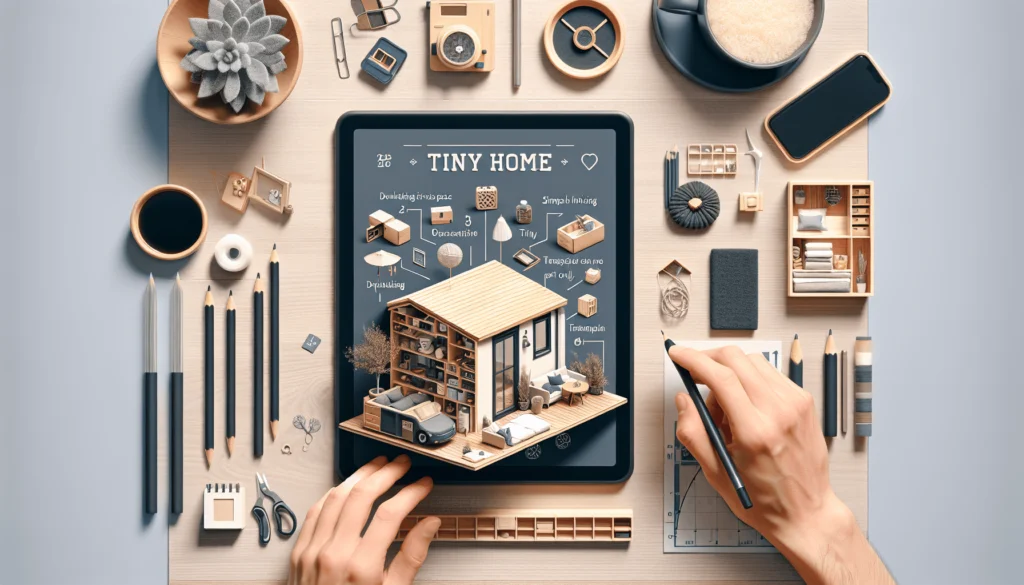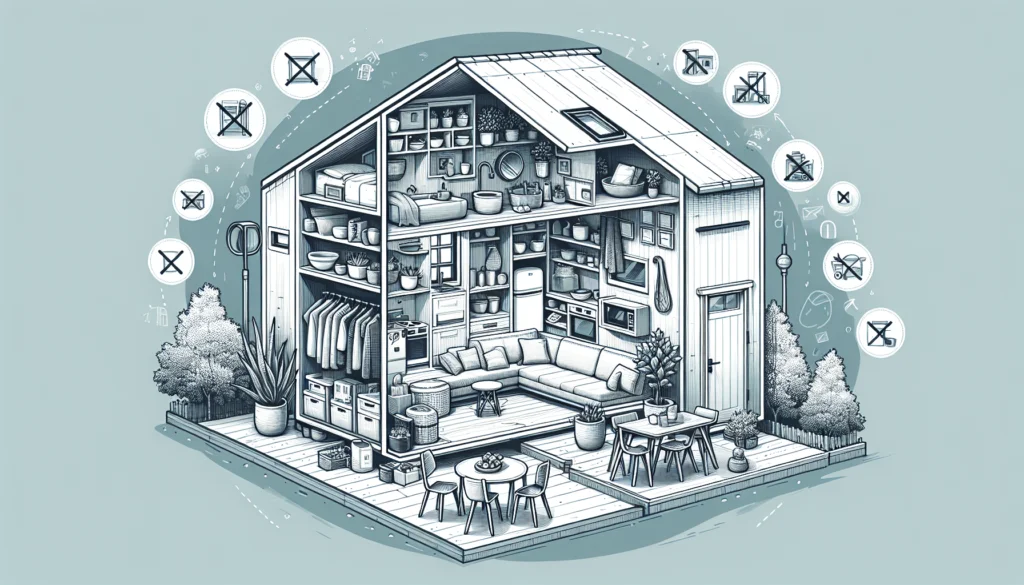Are you considering transitioning to a tiny home? Downsizing can be a daunting task, but with the right checklist, it doesn’t have to be overwhelming. In this article, we will provide you with the ultimate downsizing checklist for tiny home buyers. From decluttering to optimizing space, we’ve got you covered. Say goodbye to excess belongings and hello to a simplified and sustainable lifestyle.

Assessing Your Needs and Lifestyle
Evaluate your current living situation
Before embarking on the journey of purchasing a tiny home, it is essential to evaluate your current living situation. Take a look at your current home and assess the aspects that you appreciate and the ones that you could do without. Understanding what works and what doesn’t in your current living situation will help you identify the features you would like to have in your tiny home.
Identify your must-haves and deal-breakers
As you start planning for your tiny home, it’s crucial to identify your must-haves and deal-breakers. Consider the features and amenities that are non-negotiable for you. This could be anything from a full kitchen to a comfortable sleeping area or even a designated workspace. By knowing your must-haves, you can narrow down your options and ensure that the tiny home you choose suits your needs perfectly.
Consider your future lifestyle
When assessing your needs for a tiny home, it’s important to consider your future lifestyle as well. Will your family be growing? Will you be traveling frequently? Thinking about how your lifestyle might change in the future will help you make decisions that accommodate your evolving needs. Keep in mind factors such as space, mobility, and flexibility as you envision your lifestyle in the years to come.
Setting a Budget
Determine your financial capabilities
Setting a budget is a crucial step when buying a tiny home. Take an in-depth look at your financial situation to understand how much you can comfortably allocate towards your tiny home. Consider factors such as your income, savings, and existing financial commitments. This will allow you to determine a realistic budget that fits within your means.
Research tiny home prices and financing options
Once you have a budget in mind, research the prices of tiny homes and explore the financing options available to you. Keep in mind that the cost of a tiny home can vary significantly depending on factors such as size, materials, and customization. Look for reputable tiny home builders or dealers and compare prices to find the best deal for your budget.
Factor in maintenance and ongoing costs
In addition to the initial purchase price of a tiny home, it’s important to factor in maintenance and ongoing costs. Tiny homes require regular upkeep, just like traditional homes. Consider ongoing expenses such as utilities, insurance, and any potential repairs or upgrades that may be needed. By budgeting for these costs from the beginning, you can ensure that you are financially prepared for the long-term commitment of owning a tiny home.
Choosing the Right Location
Decide on an urban, suburban, or rural setting
When choosing the right location for your tiny home, you must decide whether you prefer an urban, suburban, or rural setting. Each setting offers its own advantages and considerations. Urban areas provide convenience and access to amenities, while suburban and rural areas offer more space and a quieter lifestyle. Consider your preferences and prioritize what matters most to you in terms of location.
Research zoning and building regulations
Before settling on a location for your tiny home, it’s essential to research zoning and building regulations. Each area may have specific rules and requirements regarding the construction and placement of tiny homes. Ensure that the location you choose is compatible with these regulations to avoid any legal issues or setbacks in the future.
Consider climate and weather conditions
Another factor to consider when choosing the right location for your tiny home is the climate and weather conditions of the area. Different regions experience different weather patterns and temperature extremes. Think about your preferences and comfort levels when it comes to weather and choose a location that aligns with your needs. Whether you prefer the mild climate of a coastal area or the changing seasons of a mountainous region, finding the right climate for you is an important consideration.
Selecting the Ideal Tiny Home Size and Style
… …

Deciding on DIY or Professional Build
… …
Maximizing Storage Space
… …
Designing Efficient Interior Layouts
… …
Choosing Energy-Efficient Systems and Appliances
… …
Planning for Off-Grid Living
… …
Adapting to a Simplified Lifestyle
… …
Remember, when choosing to downsize to a tiny home, it’s important to assess your needs and lifestyle, set a budget, choose the right location, select the ideal size and style of your tiny home, decide on DIY or professional build, maximize storage space, design efficient interior layouts, choose energy-efficient systems and appliances, plan for off-grid living, and adapt to a simplified lifestyle. By considering all these factors, you can make informed decisions and ensure that your tiny home is a perfect fit for your life. Happy downsizing!
